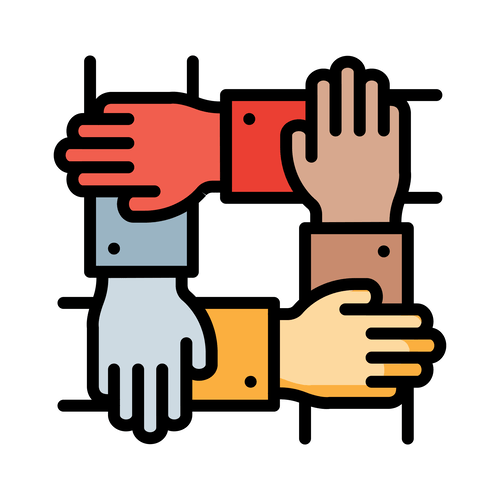A data fabric architecture could probably be considered a part of a knowledge mesh, but the main variations are the 4 pillars upon which a data mesh structure is predicated. These pillars result in further expertise and insight into information, consistency and accuracy in knowledge illustration and high quality, and simple self-service entry to data across the organization https://www.globalcloudteam.com/. These pillars not solely enhance understanding and quality of data all through the enterprise, they democratize knowledge entry for business users who wish to make data-driven decisions and assist to build a data-driven culture. As we explain on our web site, “An enterprise data material is a knowledge architecture that connects knowledge and data at scale in a distributed and decentralized method.
Instead of knowledge appearing as a by-product of a process, it turns into the product, where information producers act as data product owners. Historically, a centralized infrastructure staff would preserve information possession across domains, however the product thinking focus under an information mesh mannequin shifts this ownership to the producers as they are the topic material experts. Their understanding of the first data shoppers and the way they leverage the domain’s operational and analytical knowledge allows them to design APIs with their best interests in mind. Additionally, while area teams turn into liable for their ETL data pipelines beneath an information mesh structure, it doesn’t get rid of the need for a centralized information engineering group. However, their accountability becomes more targeted on figuring out the most effective information infrastructure solutions for the data products being stored.
However, there are many reasons to consider that data mesh and cloth approaches have the potential to offer significant advantages to organizations that adopt them. If information mesh and fabric are a match for your organization, you must observe the 5 steps outlined above to understand your organization’s knowledge challenges and the way information mesh and cloth may help systematically handle them. A information administration architecture governs how organizations acquire, store, secure, arrange, integrate, and use information. A good data administration structure offers clarity about each side of information and how enterprises can get one of the best out of their data for business development and profitability.
- In this blog publish, we will dive into Data Mesh and Data Fabric, their benefits, and how they may help organizations address the bottlenecks introduced by monolithic architectures.
- Data mesh and data cloth are being utilized by organizations to improve their information management and to better meet the demands of the digital economy.
- This comes with the understanding that the domain groups are closer to their knowledge and thus perceive their data better.
Additionally, seeking enter from specialists or consultants can further help in selecting the most suitable knowledge structure. Choosing an optimal information structure has a significant impression on the effectivity and effectiveness of knowledge management. To make an informed choice about choosing essentially the most appropriate information architecture in your organization, it’s essential to consider numerous elements and understand the differences between choices similar to Data Fabric and Data Mesh. Furthermore, knowledge fabric presents distinctive capabilities like data virtualization, information discovery, and elasticity, making it a versatile solution for modern knowledge structure. Data Fabric leverages automation discovering, associating, perceiving, proposing, and conveying data assets for customers depending on a wealthy endeavor metadata institution (e.g., a information graph). Data mesh is decided by information domain homeowners to drive the necessities upfront for information products.
Knowledge Mesh Adoption And Key Questions To Contemplate
However, a central data lake is extra usually used as dumping floor for data because it regularly is used to ingest data that does not yet have an outlined purpose. A data lake that lacks the suitable knowledge high quality and data governance practices to provide insightful learnings. It addresses the complexity of data administration and minimizes disruption to knowledge shoppers.
Data Mesh could end in fewer silos because it’s easier to make datasets obtainable to other groups. As long as they are appropriately incentivized, data product owners will try to integrate their products with the other datasets inside the enterprise. A data fabric structure facilitates data-centric instruments and applications to entry information whereas working with varied providers.
How Do Knowledge Cloth And Information Mesh Tackle Challenges In Information Management?
A information material also streamlines deriving insights from data through higher knowledge observability and information quality by automating guide tasks throughout knowledge platforms using machine studying. This improves data engineering productiveness and time-to-value for information customers. Previous approaches to overcome these challenges embody semantic layers and data virtualization. Data as a service, a data administration technique aiming to leverage data as a business asset for higher enterprise agility, has additionally been used. These logical structure approaches goal to scale the delivery of information to fulfill diverse use cases. The knowledge cloth architecture addresses the rising complexity of data management.
Unlike traditional information architectures, a data mesh promotes self-serve knowledge entry, knowledge as a product mindset, and the utilization of domain-specific knowledge platforms. It also emphasizes the importance of information high quality, privateness, and security across the organization. While the data business generally has trended toward a centralized data administration architecture, this strategy may cause numerous challenges. These challenges are sometimes at odds with what many organizations need – elevated scalability, greater knowledge agility, higher data high quality, enhanced information observability, quicker access, and improved information interoperability.
If you are considering modernizing your legacy data platform, our knowledge options consultants will work with you to determine your current data property, outline the proper trendy state, and decide one of the best path forward. Enterprises can get rid of information silos, do away with info logjams, enhance knowledge accessibility, and encourage departmental or staff collaboration by implementing a knowledge fabric architecture. Ultimately, the choice between data mesh and information fabric will rely upon which approach aligns best with your organization’s goals, sources, and strategic direction. With the exploration of Data Fabric and Data Mesh architectures, a transparent understanding may be reached on which one is the optimal alternative. Data Fabric provides a centralized strategy, guaranteeing seamless integration and collaboration amongst varied data sources. Data material, on the other hand, is a centralized method to data structure, the place data is integrated and accessible throughout the organization.
5 min read – Governments around the world are taking strides to increase production and use of different vitality to fulfill power consumption calls for. Dimitri graduated with a level in digital and computing before transferring into IT and has been helping folks with their IT points for the final eight years. A common contributor to BusinessTechWeekly.com, Dimitri holds a selection of trade qualifications, writing on subjects specializing in pc networks and security. Enables advertising teams to deliver the correct mission to the right consumer at the best opportunity and make the most of the right channel.
Xs Scale
According to James Serra, an trade advisor and knowledge and AI resolution architect at Microsoft, a data cloth is technology-centric, while an information mesh focuses on organizational change. Data mesh and knowledge material each provide a knowledge structure that permits an integrated, linked knowledge expertise across a distributed, advanced data panorama. Data mesh advocates for distributed, domain-based ownership and custodianship of data. They also are sharable with different domains and interoperable with different information products that form the data mesh. A data mesh manages knowledge as a distributed network of self-describing data products.

This strategy permits organizations to iterate and refine their information governance methods while sustaining the decentralized ownership and custodianship of information products. Both information cloth and information mesh architectures handle challenges similar to data proliferation, lack of agility, lack of collaboration, and lack of trust in knowledge. Data mesh is a decentralized method to knowledge architecture, where knowledge is handled as a product and owned by individual domain teams.
Data Governance And Safety
This ensures information high quality, consistency, and security whereas permitting different groups to access and handle data simply. Data fabric and knowledge mesh characterize different approaches to managing information in a distributed and decentralized manner. While knowledge material focuses on making a unified and consistent knowledge layer, knowledge mesh emphasizes the autonomous ownership and accountability of information by individual teams or domains. Distributed information mesh architecture hyperlinks your strategic enterprise objectives to your data merchandise. As a end result, it delivers fit-for-use knowledge products that meet your business wants.
A knowledge cloth is beneficial because it makes it simple for consumers to discover insights and entry the info they should do their jobs. According to Gartner, this happens when the information material creates data graphs. With a semantic layer that’s simple to interpret and permits teams to extract which means from knowledge, data graphs convey the worth of the information cloth to customers.

By implementing a knowledge mesh structure, corporations can leverage the advantages of information decentralization whereas promoting knowledge high quality and cross-functional collaboration, finally driving innovation and organizational growth. In essence, an information mesh is a paradigm shift in information structure that empowers domain house owners, promotes collaboration and autonomy, and allows knowledge democratization. It embraces the principles of information as a product, knowledge quality, and privacy, and aims to optimize using knowledge within a company.
It absolutely leverages knowledge property by optimizing access to distributed information across a multitude of methods and platforms. Data material is agnostic across deployment platforms, knowledge processing fashions, knowledge delivery strategies, locations and architectural approaches. Data mesh and decentralized architectures can be an effective way to implement enterprise information platforms, nevertheless it will not be the most effective answer for all organizations. Decentralized architectures require autonomous teams that may work independently, and infrequently work finest in massive, advanced organizations that need to scale analytics adoption beyond a single platform. Data mesh and knowledge material are being used by organizations to enhance their knowledge administration and to raised meet the demands of the digital economic system. They are seen as necessary approaches for managing information in an more and more advanced and decentralized data panorama.
By building a data fabric structure that integrates data from these myriad data pipelines, ensures its high quality, and makes it simply available for customers throughout the company to access on an as-needed foundation. A data material leverages both human and machine capabilities to entry information in place or support its consolidation the place acceptable. It continuously identifies and connects information from disparate applications to discover unique, business-relevant relationships between the obtainable information factors. The perception helps re-engineered decision-making, providing extra worth via fast entry and comprehension than traditional knowledge administration practices. Data mesh promotes a versatile information governance working model through federated governance. By allowing organizations to enhance the model according to their specific needs, data mesh accommodates various domains and fosters a data-driven tradition.
In the Data fabric, the data entry is centralized (single point of control), for example, a speedy server cluster for network and superior useful resource sharing. On the opposite hand, in a Data Mesh, the data is stored inside each unit (domain) within an organization Data Mesh and Data Fabric. Each node has an area storage and computation energy in a distributed Data Mesh, and no single point of control (SPOC) is necessary for operation. In a Data Mesh local weather, original information stays inside areas/domains; duplicates of datasets are created for clear use instances.
0 Comments